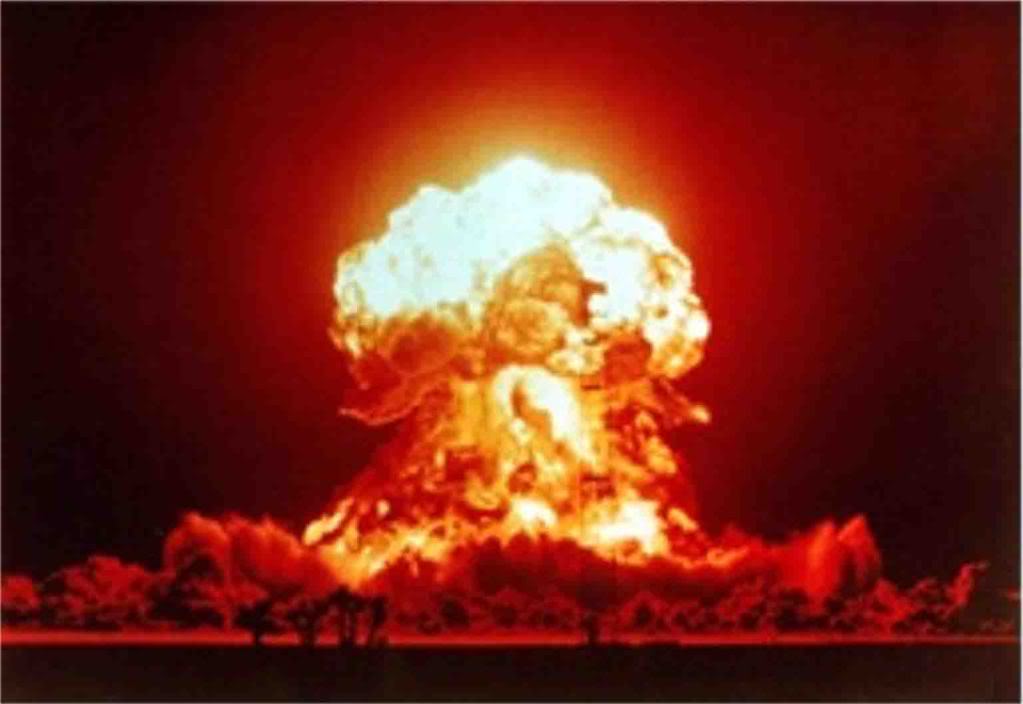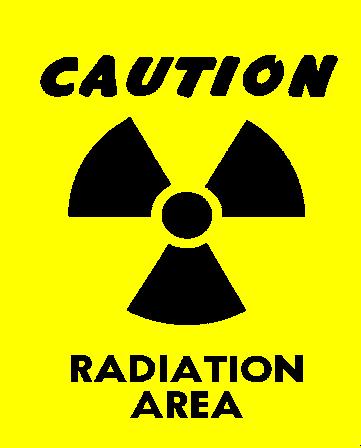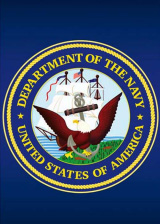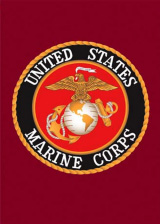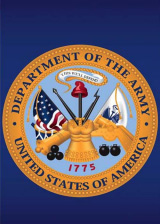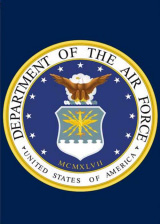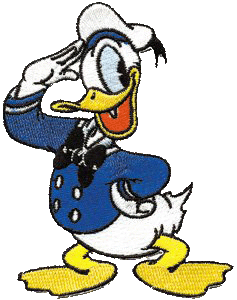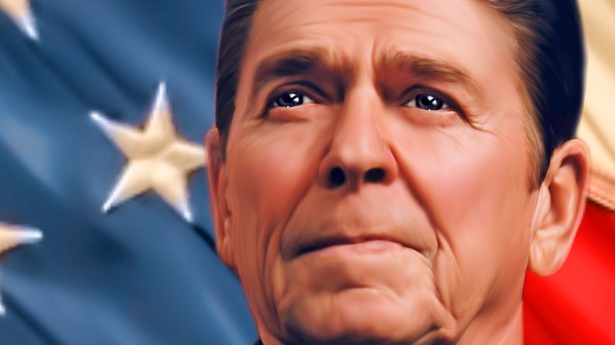WELCOME ATOMIC VETERANS

To all Atomic Veterans, Army,Navy,Marines,Air Force,Coast Guard,Government employes, please feel free to leave your atomic experience here for all to read.
This site is to allow all to learn of our sacrifice for our country and the American people.
Please be civil in your statements or stories, no profanity.
I know some of us have lost many friends and relatives due to being exposed to radiation caused by these nuclear tests and the ones having to work in a radiation environment.
Let us hope the American people will stand with us in the hope all Atomic veterans will receive the compensation and recognition we all deserve.
Please send your statement or story to cvnorris@att.net and I will check it and post here for all to read.
Or leave your statement or story, if it is not to long, in my guest book.
Who Is An Atomic Veteran
Atomic Veterans were members of the United States Armed Forces who participated in atmospheric and underwater nuclear weapons tests from 16 July, 1945 to 30 October 1962. They also include veterans who were assigned to post test duties, such as “ground zero” nuclear warfare maneuvers & exercises, removing radiation cloud samples from aircraft wing pods, working in close proximity to radiated test animals, de -contamination of aircraft and field test equipment, retrieval and transport of test instruments & devices, and a host of other duty assignments that provided an opportunity for a radiation exposure & contamination event.
ATOMIC VETERANS STATEMENTS AND STORIES
POSTED: 02/28/11
Brad Millar
I was the operations sgt for Desert Rock VI, aka Upshot-Knothole. I was in the command trench for seven of the devices including the one time that the 280mm cannon fired a nuclear device. Later, I was a nuclear weapons technician in Germany where I regulary handled bare Oralloy, Tubally, and clad plutonium components and breathed in huge quantities of trichlorethelene. The last 10 years of my career were spent in the Army's nuclear power program where I was shift supervisor on the SM1, the SL1, and the PM-2A. I made one entry into the SL1 after its excursion in 1960.
9POSTED: 03/-01/2011
Gus Magafas
I was assigned to the atomic task force that took part in the tests in the south Pacific 1952 through 1956.Needless to say it was not on a voluntary basis that we went.My ship was the USS Curtiss AV- 4,originally a sea plane tender.However it was used, to transport top brass & scientests attached to US nuclear testing done at that time.I wouldn't take a million dollars for my experience in those tests.I do wonder though if medical problems that I do have now can be related to my involvement,or just due to old age,lol? Also,I would like to know if there is any compensation being paid to the guinea pigs that had participated,in any of the nuclear testing done?
POSTED: 03/02/2011
Ruben Martinez
I was looking at the photos of some of the tests that were held at Eniwetok. I was at both Greenhouse and Ivy (I was also at Buster-Jangle. I don't believe that some of the dates you have for Ivy are correct. I believe that the first H-bomb was tested on November 1, 1952 and I do not think that there was one on October 31. We were one day ahead when the H-bomb was tested, it was Nov.1 at Eniwetok, but Oct. 31 in the USA. I do recall that after the H-bomb test, there was another test. When the first H-bomb test was done, we were all taken of the island, but not for the second test. I do not think that I am mistaken on this. Thank you.
POSTED: 03/07/11
Tom Botchie Monday, 3/7/11, 4:35 PM
Monday, 3/7/11, 4:35 PM
Email:  toppop59@comcast.net
toppop59@comcast.net
POSTED: 03/31/2011
Charles Nachbar Thursday, 3/31/11, 9:46 AM
Thursday, 3/31/11, 9:46 AM
POSTED: 04/13/11
Mack Fowler
I was in Nevada test in 1956 Oct. Went up to point 0. My buddy became a zombie and i carried him back to the trench. i was bleeding from all of my face by then and passed out for a couple of days they treated me for 10 mounts, had heart attact one year later + lung problens, still alive though.
From: amarillo tx.
amarillo tx.
Email: macpeg@suddenlink.net
macpeg@suddenlink.net
POSTED: 10/19/11
Click here to add text.
George Eger Wednesday, 10/19/11, 12:44 PM
Wednesday, 10/19/11, 12:44 PM
Any Atomic Veterans who live around Springfield, Mo, please
contact me at: cvnorris@att.net
Would like to get together for coffee etc.
I had a large group of old shipmtes when I lived in Ca.
POSTED: 01/03/2012
Atomic veteran
Bianco recalls infamous nuke test
“It was very frightening, this multi-colored roiling around thing up in the sky. The image that came to my mind was a diseased brain up there. It was very scary.”
— Dr. Marshall Rosenbluth, physicist and witness to the Bravo test
By James Staley
jstaley@lcsun-news.com
The bakers made mistakes.
That’s what drew a young John Bianco to the bakery near his Baltimore neighborhood. If he got to those mistakes quickly enough, Bianco could take them home.
During the Great Depression, you had to be ready for any opportunity.
“A lot of times, that was all we had to eat,” Bianco said.
He’s 86 now, living in a local retirement home. At one time in his life, he was a strapping sailor. These days, meandering through the halls of the retirement home, Bianco supports himself with a rolling walker, but gets around pretty well considering he has endured two knee replacement operations, four back surgeries and two bouts with cancer.
Last week, he talked about some of the more memorable moments in his life and career in the Navy. Bianco’s laughs, funny stories and occasional exaggerated hand gestures belie his almost constant pain. His esophagus doesn’t function properly, making eating a repetitive and unpleasant experience.
But that’s not what Bianco wants to talk about. Most of his conversation surrounds the events of one historic day.
March 1, 1954.
Bianco was aboard the USS Philip, an escort destroyer. He was a baker, a trade he had picked up after hanging around that Baltimore bakery so much as a kid.
He and the rest of the Navy personnel aboard the ship were there as part of Operation Castle, a series of experimental thermonuclear detonations near Bikini Atoll in the Pacific. That morning, the first of seven thermonuclear devices — commonly called hydrogen bombs — was scheduled to explode. It was the Bravo test.
At 6:45 a.m., Bianco was on the deck of the USS Philip, with much of the rest of the crew. They wore special glasses to block the intense light emitted by what was anticipated to be a six-megaton explosion.
Those glasses failed.
Bianco’s reaction was to block his eyes with his right forearm and crook of his elbow.
“I saw the blood running through my arm,” he said.
This frightened him, so he dropped his arm. That revealed an even more chilling sight.
Said Bianco: “The man standing in front of me was a complete skeleton.”
The nuclear flash was bright enough to give Bianco temporary X-ray vision.
A short time later, superior officers told Bianco and the other men they could gaze at the fireball rising above them. He said he was scared to look at first, given the incredibly bright light the explosion had created. Eventually, he took a peek.
“All I could see was a big ball of black and red boiling into the sky,” he said. “... About an hour later, it looked like it was snowing.”
It was radioactive ash.
The device detonated in the Bravo test was nearly three times more powerful than physicists expected. It remains the most potent nuclear device ever exploded by the U.S. Another problem: the wind shifted, scattering the fallout further than anticipated.
Bianco and the rest of the sailors scurried below decks. The ventilation was closed, which turned the USS Philip into a toxic sauna.
Bianco vividly remembers inhaling deeply once he was cleared to be outside again; the cool air felt refreshing at the time, but he can’t help but think that it was those irradiated particles which caused his esophageal problems. He wonders about the cancers and all the joint pain, too.
But more than that, he wonders about the others — the men that tried to help the nearby natives on Rongelap Atoll. He watched about 30 sailors help about 75 natives who had been subjected to the radiation from Bravo.
“If you see a baby with radiation sickness, you never forget it,” Bianco said.
He paused.
“If anybody deserves a medal, those men do.”
Bianco has received some assistance from the National Association of Atomic Veterans. But he hasn’t heard from any other sailors aboard the USS Philip that day. He wonders how many are still alive.
Bianco served until 1964, when he retired and worked as chief of food service at a prison. He and his wife, Sandy, moved to Las Cruces from Glen Burnie, Md. in 2004.
When he talks about that, the big smile returns to Bianco’s face.
“I came to visit my daughter,” he said. “And I didn’t want to go back.”
James Staley
Reporter
Las Cruces Sun-News
jstaley@lcsun-news.com
(575) 541-5476
Friday, 2/24/12, 3:20 PM
Michael Osterbuhr
My father was exposed to radiation while he was being processed to be sent to Germany with the Army Airs Corps. The airmen (and also Navy submarine personnel) were treated with an instrument "something like a tuning fork" that had been dipped in radium. It was placed in their nostrils for about 20 minutes per treatment. The NASOPHARYNGEAL Radium treatment was supposed to help the airmen and sub-mariners breathe better at high altitude and under water in the subs. My father had no immediate negative effects, but has since had one leg removed, the lower lobe of one lung removed, and the top of the other lung removed; and later I've learned that he also had bladder cancer. The first cancer was diagnosed as swanoma-sarcoma (sp?) - a sinowy, spread out, fiberous cancer that didn't form tumors until after an exploratory surgery on his left foot arch (where he'd experienced numbness). The swanoma-sarcoma pinched off the nerve, so eventually the left leg was numb below the knee, leading doctors to amputate the left leg just above the knee. Fortunately dad is still with us and 86 years of age.
From: Wichita, KS
Web Site: Osterbuhrs
Email: Michael@Osterbuhr.us
Posted: 03/06/2012
Atomic Veteran
James Stroud
I was aboard the Sproston, DDE 577 at Enewetak for Operation Greenhouse in 1951. We escorted the Curtiss and the weapons from San Francisco. We steamed all around there on lots of patrol through all the detonations. I have had a number of malignant skin cancers, BCC & SCC, no melanoma yet, but I would not be surprised. I have had so many "pre-cancerous lesions" removed I have lost track. Diagnosed with prostate cancer last fall. I have suffered with "Post Radiation Syndrome" for many years. The VA is sure taking it's time on the "ionizing radiation" portion of all my claims, but I have done my research.
Posted: 9/22/2012
Atomic Veteran
Bernard(Bear) Travis
I was at camp desert rock nv from around june1st to sometime in october 1957, i was in all the test,at that time...i was with the 285th faob(3rd army) out of ft bragg nc.B-battery, i was 18 years old at that time, scared the hell out of me, when i could see the bones,in my hands...i have health problems, from the testing, but nothing that the va, will admit to... would love to hear from anyone in that unit...good luck atomic veterans....
From: Kentucky/ tennessee
Kentucky/ tennessee
Email:  bearcattravis@gmail.com
bearcattravis@gmail.com
Posted 10/23/2012
Atomic Veteran
Stan Alsing
I was in USNR VP-872 called up for the Operation Dominic 1962 tests. We flew the shipping suppresion patrols off Christmas and Johnston Islands for at least 21 of the "shots". We were at Johnston for the 2nd high altitude shot that was destroyed after launch and had stuff raining on us for about 5 minutes. The weapon itself landed between 2 of our planes. Only one plane had a hole punched in it. AO2(NAC) at the time.
From: California
Email: SRALSING@aol.com
POSTED: 08/07/13
By Julie Whitehead
A story about a British Atomic Veteran, Ray Whitehead who with his wife Yvonne fought decades with the British government because of his and his fellow Atomic Veterans
exposer to radiation from the nuclear tests, to get compensation for their sacrifice to their country.
Go here:
POSTED: 10/13/2013
DTom Di Giorgio sent email about his duty at Operation Dominic
From: "Thomas J. Di Giorgio"
To: pdxavets@aracnet.com
Date: Sat, 5 Feb 2005
Subject: Re: B57 Pilot report
My participation in Operation Dominic as a B57 pilot began in January 1962. At the time I was flying the F89 interceptor for the 103FIS (PANG) at the Philadelphia International Airport. When a request came down from Wing Headquarters for volunteers to go on a classified mission to a small island in the South Pacific, three other pilots, and I signed up. Our first stop was Louisville KY, where we checked out in the B57. Two weeks later we were on our way to the 1211th test squadron in Albuquerque NM. where we flew several missions learning how to do air sampling.
Then off to Hickam Air Base, Hawaii where we practiced until we learned that we would be going to Christmas Island to perform air sampling missions during the atomic bomb testing. We then flew our B57s to Christmas Island. Once the bomb testing started we took turns flying through the mushroom cloud immediately after the detonation. Most detonations took place about 20miles downwind of the island. A transport ship was moored off the island should the winds suddenly turn around during a test. . (It never did)
A typical mission went like this. Each pilot would have a specific take-off time. It could be five, ten or fifteen minutes before detonation or immediately after detonation time. We would climb to a designated altitude and toward the mushroom cloud. (If we took off before detonation we would make sure we were heading in the opposite direction at zero time). Another B57 pilot with an engineer in the back seat would join up with us for a few minutes to give us an exact heading to hold while we flew through the cloud. We would also be given an emergency exit heading should the cloud become too hot. We would know this by the reading of the radiation detection instruments, which were installed in the back seat. My navigator would read these gage numbers over the air as we flew through the cloud. I would be responsible for opening the air sampling valves on the empty tip tanks. If the gages did not max out I would hold the heading until I came out the other side of the cloud, I would immediately head back to the airstrip, land, and taxi to the decontamination area.
After shutting down the engines, I would raise the canopy. This allowed the decon specialists, who were dressed in white protective gear and wearing big gloves, to drive a forklift with a raised wooden platform on its tongs to the edge of the cockpit. An airman on the platform would first lift the navigator, then me out of the cockpit. This procedure prevented us from touching the outside of the airplane. The only protection we wore was a lead vest over our thin summer flight suit. Instead of the usual heavy flight boots, we wore light athletic sneakers. The reason for this was that after we were taken to the decontamination building we discarded all of our clothing into a large empty oil drum. I guess these were then washed and used again. We were then directed to the shower area where we used some strong hard soap to wash off any external radiation we might have accumulated. After drying off we were checked with a Geiger counter and if the numbers were too high we returned to the showers until we got the numbers down to a safe? number. Normally two showers would suffice, but I heard the record for one crew was seven showers. Short hair was a must, as hair would trap the radiation.
To measure how much radiation each crewmember accumulated, we would wear a dosimeter attached to a string around out neck and would also swallow a radiation detection pill. This pill was about one inch long and shaped like a football. It was hinged in the center to allow a dosimeter in its center to be read after retrieval. The method of retrieving it was not something we looked forward to.
Meticulous records were kept and if a crewmember had high accumulations of radiation he/she would not be allowed to continue the air sampling missions. I never accumulated more than ten Roentgens. Some years later the Atomic Energy Dept sent me documentation of my radiation exposure during operation Dominic. Included was a list of possible health hazards associated with exposure to radiation received while flying through atomic bomb clouds. Fortunately, to date, I have not experienced any those symptoms.
Tom Di Giorgio
1211th Test Sqdn.
Lt Col. USAF(Ret)
Email Tdigior536@Aol.com
POSTED: 11/12/2013
Lowell Gunselman Participated in Operation Redwing.
Go to this address for his story.
Posted: 02/09/2015
Walter E. Venator, Jr.
141 Trapper Lane
Magnolia, DE 19962
My Atomic Experience:
My participation in Operation Hardtack began in February, 1958 when I received orders for Eniwetok Atoll, APO 187. As the Lockheed Constellation landed and taxied I surveyed the awesome sight of the remnants of WW ll. Eniwetok, being part of the rim of a volcano, has a lagoon side and an ocean side. The lagoon side is beautiful if you overlook the truck, plane and ship parts strewn over a good part of the beach.
Our day started at 4:30 AM. We worked in the morning hours and spent the afternoons relaxing. We had a light bulb in our closets in order to dry the air and protect our shoes and garments from mildew. Every day was sunny and it rained just about every night.. in the middle of the movie of the week.
I worked in a communications building housing ground to air transmitters that used 4X150 tubes in their finals. Because of the intense ambient temperature, and the resulting building heat, the 4X150s needed continual replacement. A team of four was kept constantly busy maintaining the transmitter/receivers. We had to stop working around noon because the temperature in the shack housing ground-to-air equipment was approaching triple digits and the humidity was 100 percent. After about two months, air conditioning was installed in the building and we were out of work. The air conditioning cooled the site so much that the 4X150s never melted again and we just needed to take meter readings once a week. I got transferred to an Army communications facility in the middle of the island.
Wisdom teeth removal required a trip to Hawaii. After my return from Hawaii, I saw a friend from Westover AFB who decided an assignment to Eniwetok was just what he needed and when he asked how I was doing, I responded with, “I m getting off this rock". To my amazement, he replied with, “You’re right this time, you are going to Hawaii, then on to Johnston Island.” An Air Force Sergeant, S/SGT Brewer was placed in charge of about six of us. We flew to Kwajalein and on to Hawaii. We were assigned to Bellows AFB for about a week and then to Johnston Island to participate in Project Newsreel. Project Newsreel included filming of all participanrs evacuating Johnston island and boarding an LCM which took us to the aircraft carrier, the Boxer.
We spent about a month getting the equipment installed for the missile shot and maintaining existing ground-to-air gear. Then, instructed to pack an overnight we were evacuated from the island on a LCM to board the Boxer. I was in awe of its size, but it was small compared to today’s carriers.That night, we were instructed to go to the flight deck to witness a nuclear blast. The bomb was attached to a Redstone missile that was launched from Johnston Island which was now approximately 75 miles distant.
Although only 20, and not at all educated in the physics of nuclear devices, I clearly proceeded with hesitation. Something didn’t sound right. We were told to bring sheets to place around our bodies because the radiation would be reflected by the white color. I couldn’t believe it, knowing a sheet couldn’t stop solar rays, why should it have any affect on nuclear radiation. I didn’t know about alpha and beta particles then. My gut just told me this is something to be reckoned with.
So I dutifully stood on the deck with my sheet and goggles. I recall asking a civilian standing next to me if he had any idea of how long the heat would last. He said he had no idea. I didn’t dare look at the shot. At about 10:00 PM the bomb was detonated from an altitude of (I believe) 50 miles. We were approximately 710 miles from Waikiki. I recall three very vivid things. An intense white light that I can only describe as an infinite number of flash bulbs going off and staying on for quite a lengthy time. I heard from people in Hawaii as I passed through back on my way to Eniwetok some weeks later, that you could read a chapter of a book, the light was so bright and lasted so long. They had no idea the blast was coming and when they observed it, they thought it was the end of the world. The second thing I recall, is the heat. It was intense. It probably didn’t last more than 200 milliseconds, but the residual temperature was uncomfortable. I had my head down because I refused to look into the fireball. Because I had my head in this position I think it enabled me to see something those looking up couldn’t see. I saw those in front of me, (and there were hundreds on the deck) as though they were Xrayed. I remember that sight most of all. The Xray sight was awesome. I thought, my God, this is not good. I also thought that the people responsible for these tests don’t have a clue.
We were debriefed the following day upon returning to Johnston Island and then I headed back to Eniwetok. I left Eniwetok for an assignment to Okinawa on 90 days TDY and returned to Eniwetok just in time to be sent home for Christmas.
I have an 8 x 10 full color picture of Umbrella, and underwater detonation. The WW ll junk in the lagoon was sucked up in a column of 13,000 feet of super heated irradiated water. I won’t forget that. I can’t forget the many craters caused by nuclear bombs set off in the pristine coral. And, most of all, I can’t forget the shot I witnessed aboard the Boxer. I wonder about the effects of nuclear radiation on the Marshallese to this day.
Many people were affected by the radiation exposure from the bombs detonated in 1958. I didn’t witness all of them, but the ones I witnessed convinced me that what I saw and learned later in life prove we could have done these tests differently. I earned a degree in Electronic Engineering Technology, studied Nuclear Engineering, designed equipment for the Apollo Program and electronic countermeasures for defense which equipped me to reevaluate the events of 1958. Dr. Robert Oppenheim was right; we could have performed the tests with mathematics. After all, that’s how I learned how powerful and harmful nuclear particles can be.
More stories and facts about the nuclear tests conducted in 1958 may be found in my little book, ‘Where the Boys Were”, at Internet Archive,
http://www.archive.org/details/WhereTheBoysWere.
Walter E. Venator, Jr.
Posted: 10/08/2017
Ron Benoit U S ARMY Atomic Veteran
Click on URL address to read Ron Benoit's story.
